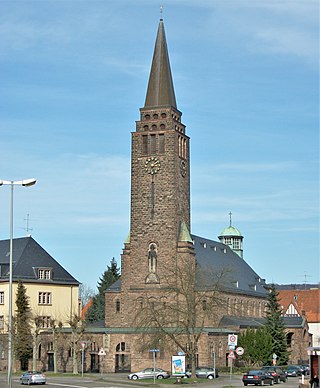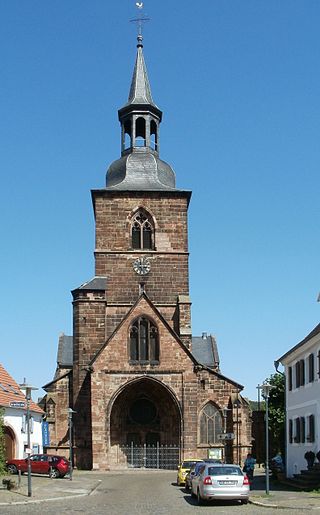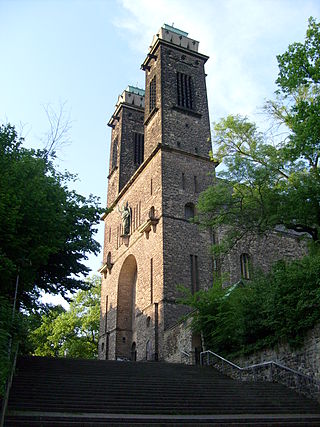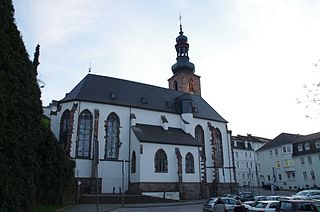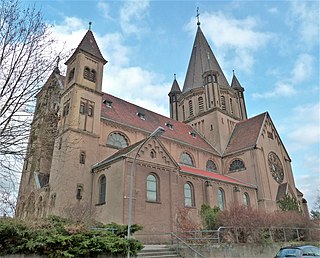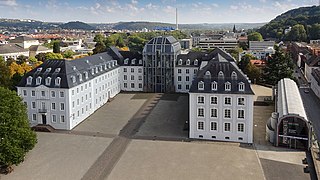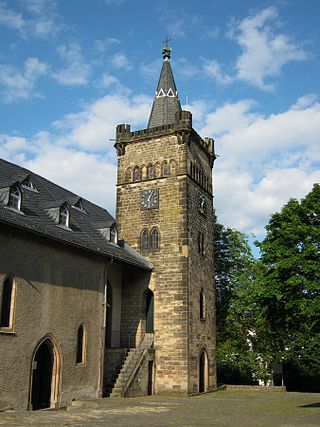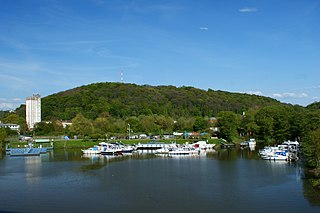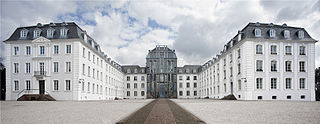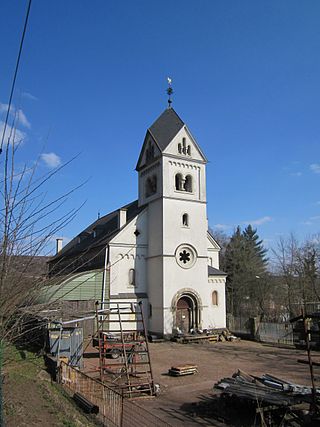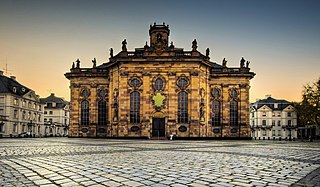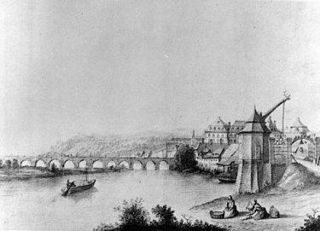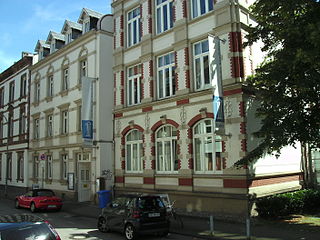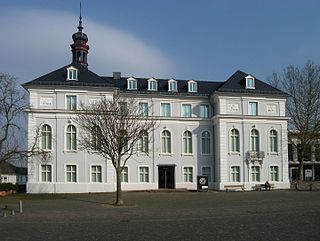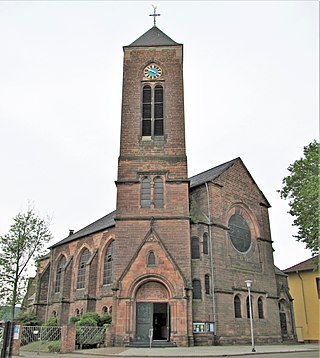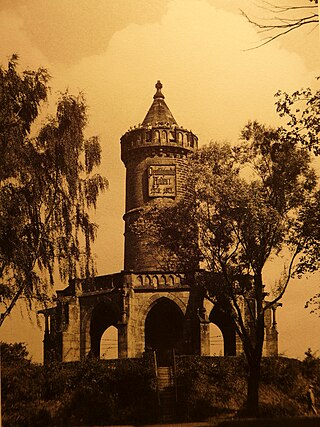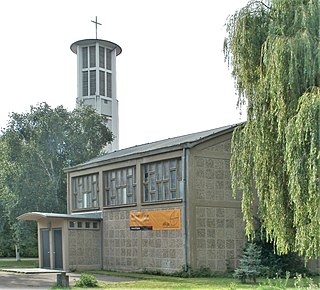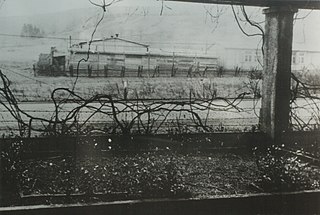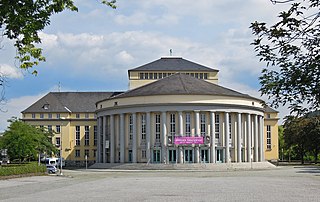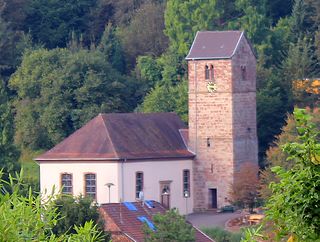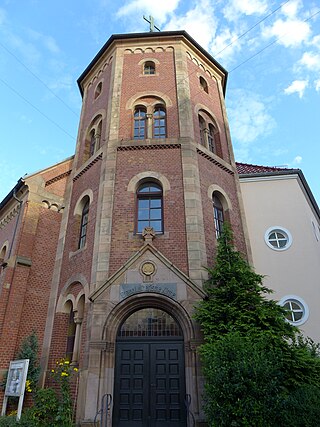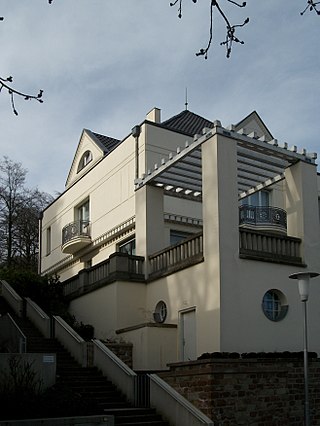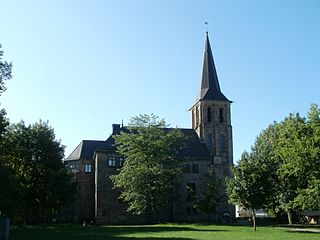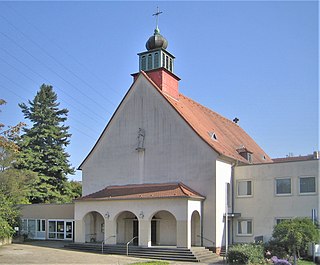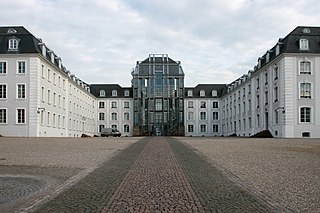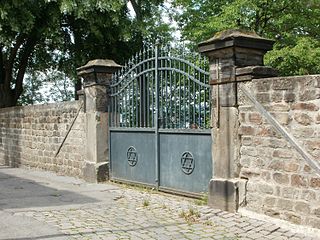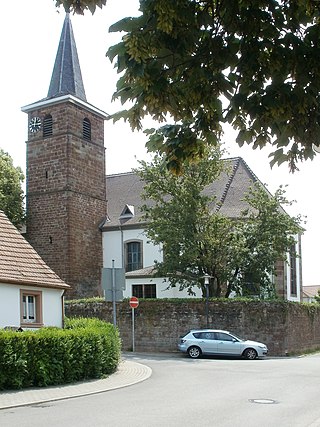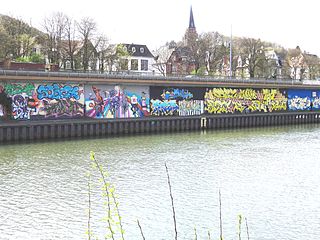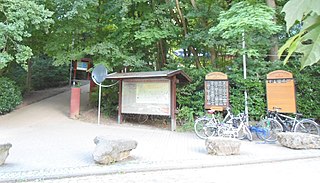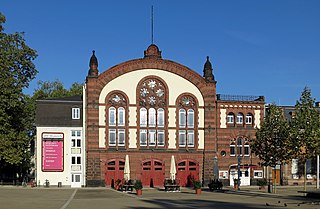32 Sights in Saarbrücken, Germany (with Map and Images)
Legend
Welcome to your journey through the most beautiful sights in Saarbrücken, Germany! Whether you want to discover the city's historical treasures or experience its modern highlights, you'll find everything your heart desires here. Be inspired by our selection and plan your unforgettable adventure in Saarbrücken. Dive into the diversity of this fascinating city and discover everything it has to offer.
Sightseeing Tours in Saarbrücken1. Christkönigkirche
The Christ the King Church is a Roman Catholic parish church in St. Arnual, a district of Saarbrücken, the capital of Saarland. The patron saint is Christ the King. In the list of monuments of the Saarland, the church is listed as an individual monument in the ensemble An der Christ-König-Kirche. With regard to the Christological intention of its iconography, the sacred building, which is designed in an expressionistically interpreted Romanesque and Byzantine formal language, is of particular theological and art-historical importance. The parish belongs to the Diocese of Trier.
2. Stiftskirche St. Arnual
The Abbey of St. Arnual is a former canon monastery in the district of Sankt Arnual, which today belongs to Saarbrücken, which belonged to the Diocese of Metz and was converted into a Protestant monastery during the Reformation.
3. Pfarrkirche St. Michael
St. Michael is a Roman Catholic church in the St. Johann district of Saarbrücken, which was built between 1923 and 1924 according to plans by the architect Hans Herkommer. Since then, it has been the largest church building in the Saarland capital in terms of interior space, ahead of the Protestant Ludwigskirche. In addition to the so-called Saardom in Dillingen/Saar, the St. Ingbert St. Joseph's Church and the Malstatt Josefskirche, St. Michael's Church is one of the largest churches in Saarland. The church is assigned to the Diocese of Trier. The church's patronage day is the feast of St. Michael the Archangel on 29 September.
4. Schlosskirche
The Castle Church is a former church in Saarbrücken, Germany. Until the introduction of the Reformation in 1575, it bore the patronage of St. Nicholas of Myra. Since 2004, the church building has been a museum for Christian sacred art.
5. Herz-Jesu-Kirche
The Catholic Sacred Heart Church in Saarbrücken was designed by the architects Ludwig Becker and Anton Falkowski and inaugurated in 1914. The neo-Romanesque church is dedicated to the Sacred Heart of Jesus as a patronage. The feast of the patron saint is the solemnity of the Sacred Heart of Jesus on the third Friday after Pentecost. The church, which is listed as an individual monument in the Saarland list of monuments, is located at Odilienbergstraße 1, in the Saarbrücken district of Burbach. The Sacred Heart Church is historically the third Catholic church in the municipality of Malstatt-Burbach, which was independent from 1874/75 to 1909, after the St. Eligius Church in Burbach and the St. Josef's Church in Malstatt. The church is assigned to the Diocese of Trier.
6. Johanneskirche
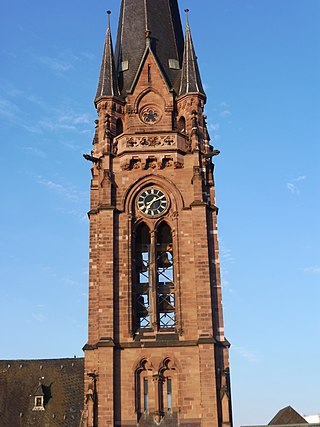
The Johanneskirche is a Protestant church in Saarbrücken, Germany, completed in 1898. It is located in the district of St. Johann, opposite the town hall of St. Johann. The neo-Gothic church survived the Second World War almost without damage, although the air raids on Saarbrücken had largely destroyed the city. The church underwent a purifying redesign in the post-war period. Today, not only church services are held in St. John's Church, but also rallies and cultural events are held. In the list of monuments of the Saarland, the church is listed as an individual monument. The church is assigned to the Saar-West church district of the Evangelical Church in the Rhineland. The tower of St. John's Church with its height of 74 m is currently the highest church tower in Saarland with its original height of 75 m after the destruction of the tower of Saarbrücken's St. Joseph's Church during the war.
7. Historisches Museum Saar
The Historical Museum Saar is the museum of the history of the Saarland and is located on Saarbrücken's Schlossplatz. The aim of the museum is to process and present the history of the state on the Saar over a period of 100 years until about 1959 under cultural, social, economic, industrial and technical historical aspects. In addition, excavations of Saarbrücken Castle with the casemates can be used to trace the development from the castle to today's castle. The permanent exhibition is complemented by temporary exhibitions.
8. Deutschherrenkapelle
The Kommende St. Elisabeth in Saarbrücken is the former branch of the Teutonic Order in Saarbrücken. It was founded at the end of the life of Count Simon III, who had participated in the Fifth Crusade. In common parlance, it was formerly referred to as the "Deutschhaus" or today mostly subsuming as the "Deutschherrenkapelle", but strictly speaking this only refers to parts of the ensemble.
9. Schloss Halberg
At 280 m above sea level, the Halberg is a solitary, wooded mountain in Saarbrücken. The Halberg rises in the Saaraue, which it towers over by about 80 m. On the slope is the middle sandstone, on the summit the upper Bunter sandstone.
10. Saarbrücker Schloss
Saarbrücken Castle is a Baroque château in Saarbrücken, the capital of Saarland. It is located in the district of Alt-Saarbrücken on the left bank of the Saar. Earlier, a medieval castle and a Renaissance castle stood on the same site.
11. Stumm-Kirche
The Stumm Church is a former Protestant church in the Saarbrücken district of Brebach-Fechingen. It is named after the industrialist family Stumm, who had the church built. The building is listed as an individual monument in the Stummstraße monument ensemble. The former sacred building is now used for agriculture.
12. Ludwigskirche
Ludwigskirche in Old Saarbrücken, Germany, is a Lutheran Baroque-style church. It is the symbol of the city and is considered to be one of the most important Protestant churches in Germany, along with the Dresden Frauenkirche and the St. Michael's Church, Hamburg.
13. Alter Saarkran
The Saarkran in Saarbrücken, originally called "Saarkrahnen", most recently also called Alter Saarkra(hne)n, was a baroque harbour crane, built according to plans and under the direction of Friedrich Joachim Stengel in 1761/1762 on the order of the sovereign prince Wilhelm Heinrich of Saarbrücken-Nassau. Today's crane is a replica, erected at the same location south of the Wilhelm-Heinrich-Bridge on the left bank of the Saar. It is a land-based pedal wheel crane, also called "house cranes" at the time, as opposed to floating cranes or crane ships.
14. Saarländisches Künstlerhaus
In the form of an association structure, the Saarländisches Künstlerhaus Saarbrücken e.V. is a place of work and meeting for cultural workers from the fields of visual arts, literature and arts and crafts. The headquarters of the institution is Saarbrücken.
15. Kreisständehaus
The Kreisständehaus on Schlossplatz in the Saarbrücken district of Alt-Saarbrücken is the seat of the Museum of Prehistory and Early History and the Old Collection of the Saarland Museum. It is listed as an individual monument.
16. Matthäuskirche
The Matthäuskirche is a Protestant church in the Burbach district of Saarbrücken above the Burbacher market on the Weyersberg. Your community belongs to the Saar-West church district in the Evangelical Church in the Rhineland.
17. ehem. Winterbergdenkmal
The Winterberg Monument was a war memorial on the Winterberg in Saarbrücken, Germany. The 30-metre-high tower monument with a surrounding foyer, erected on an artificial hill, commemorated Prussia's victory at the Battle of Spichern on 6 August 1870. Today, only the reconstructed plinth with staircase remains, which is a listed building. The name Winterberg itself is a corruption of Wingert-Berg, as wine had been grown here.
18. St. Elisabeth
The Church of St. Elisabeth is a Roman Catholic branch church of the Diocese of Trier in Saarbrücken, Germany. It is located on Hellwigstraße in the district of St. Johann an der Saar. Patronage Day is the church memorial day of Elisabeth of Thuringia on 19 November.
Wikipedia: St. Elisabeth (Saarbrücken-St. Johann) (DE), Twitter, Facebook, Instagram, Website, Youtube
19. Gedenkstätte „Ehemaliges Gestapo-Lager Neue Bremm“
Neue Bremm was a Nazi torture camp in Saarbrücken, set up in 1943 by the Gestapo intentionally with no oversight from other institutions. It was designed to break prisoners who were not destined for immediate death. Some prisoners were held only for a few weeks, others, much longer; both men, and women. During that time they were put to work in slave-labour commandos and broken. Those who survived purposeful starvation were sent on to Nazi concentration camps such as Buchenwald. Approximately 20,000 men and women passed through Neue Bremm, including Jews from occupied Eastern Europe as well as Frenchmen, Belgians, Britons and Italians. However, the total number of casualties remains unknown.
20. Saarländisches Staatstheater
Theater Saarbrücken, officially Saarländisches Staatstheater since 1971, is the state theatre of Saarland in its capital Saarbrücken, Germany. It has several divisions and offers annually around 30 new productions in around 700 events for more than 200,000 people. Its venues are Großes Haus, Alte Feuerwache, Congresshalle and sparte4. While theatre in Saarbrücken has a long history, the present main venue was completed in 1938, with plans commissioned by the Nazi regime.
21. Evangelische Kirche Scheidt
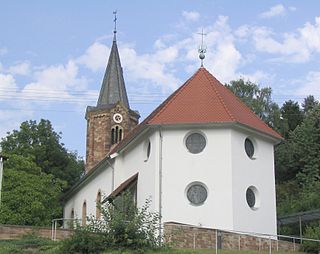
The Evangelical Church of Scheidt is a church building in the Saarbrücken district of Scheidt within the residential development. It is located in a central location just south of the Kaiserstraße (B 40) on the flank of the Scheidter Berg. In the list of monuments of the Saarland, the church is listed as an individual monument.
22. Evangelische Kirche Fechingen
The Protestant church in Fechingen is a listed church building in the Saarbrücken district of Fechingen. The building is one of the oldest Christian buildings in Saarland. The parish of Brebach-Fechingen belongs to the Saar-West church district of the Evangelical Church in the Rhineland.
23. Immanuelkirche Saarbrücken
The Evangelical Lutheran Immanuel Church Saarbrücken is a Protestant church in Saarbrücken, Germany. It belongs to the church district of Southern Germany of the Independent Evangelical Lutheran Church (SELK). The parish district includes Saarbrücken and Walpershofen.
24. Villa Obenauer
The Villa Obenauer is an upper-middle-class villa built between 1905 and 1907 according to a design by Peter Behrens in Saarbrücken, Trillerweg 58. It is located in the Triller residential area of Saarbrücken on the south-eastern slope above the road, and the hillside location characterises the architecture. As an important testimony to the history of the development of modern architecture in the 20th century, the building is a listed building.
25. Evangelische Kirche Malstatt
The Evangelical Church of Malstatt in the Saarbrücken district of Malstatt is one of the two churches of the parish of Malstatt in the Saar-West church district of the Evangelical Church in the Rhineland. It is a listed building as an individual monument.
26. St. Antonius
The Catholic Church of St. Anthony of Padua is a church building of the three parishes in the upper and lower Malstatt, which have been united since 1 January 2006 in the pastoral care unit of St. Josef (Saarbrücken) in the Saarbrücken deanery of the Diocese of Trier and is located in the Saarbrücken district of Malstatt on the Rastpfuhl. It bears the patronage of St. Anthony of Padua.
27. Platz des Unsichtbaren Mahnmals
The Platz des Unsichtbaren Mahnmals – or in English, the Place of the Invisible Memorial – is a memorial to Jewish cemeteries. It is located in Saarbrücken, capital of the German state of the Saarland. To the visitor, the memorial is completely invisible – it only appears as a sign at the place, reading "Platz des Unsichtbaren Mahnmals".
28. Alter Jüdischer Friedhof
The Old Jewish Cemetery in Saarbrücken, the state capital of the Saarland, was established in 1841. The Jewish cemetery is located on the corner of Graf-Simon-Straße and Komturstraße and is a protected cultural monument.
29. Evangelische Kirche Güdingen
The Evangelical Church of Güdingen is a religious building of the parish of Obere Saar in the Saarbrücken district of Güdingen. The parish is assigned to the Saar-West church district of the Evangelical Church in the Rhineland. In the list of monuments of the Saarland, the church is listed as an individual monument.
30. 4560
The 4560 is a so-called Graffiti Hall of Fame in Saarbrücken, Germany. On this graffiti wall, the city allows graffiti to be sprayed, and in this way wants to promote the creativity of youth culture. The wall stretches over 450 meters and has an area of 1800 square meters.
31. Wildpark Saarbrücken
The Saarbrücken Wildlife Park is the wildlife park of the Saarland state capital Saarbrücken. It is located in the St. Johann city forest on Meerwiesertalweg opposite the Hermann-Neuberger-Sportschule.
32. Alte Feuerwache
The Alte Feuerwache is a venue of the Saarländisches Staatstheater in Saarbrücken-St. Johann. Previously, it was used as a gymnasium with a fire station for the volunteer fire brigade. The building is protected as an individual monument.
Share
How likely are you to recommend us?
Disclaimer Please be aware of your surroundings and do not enter private property. We are not liable for any damages that occur during the tours.
